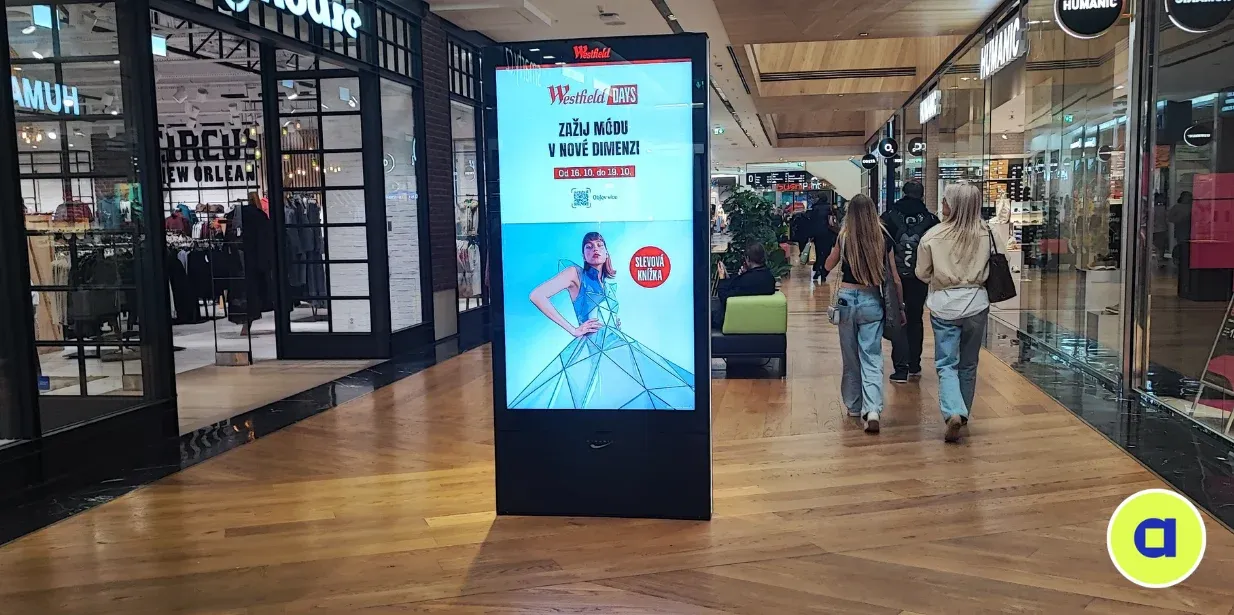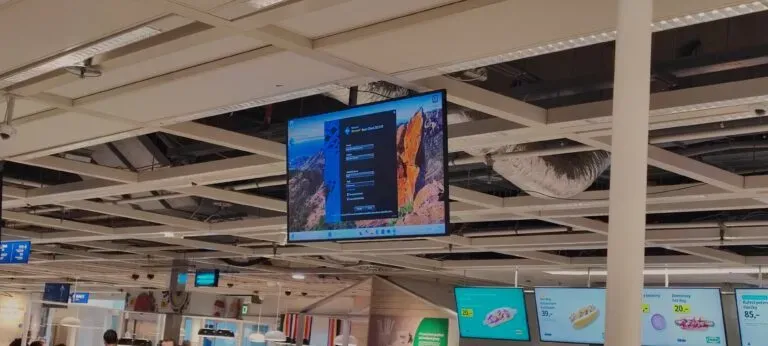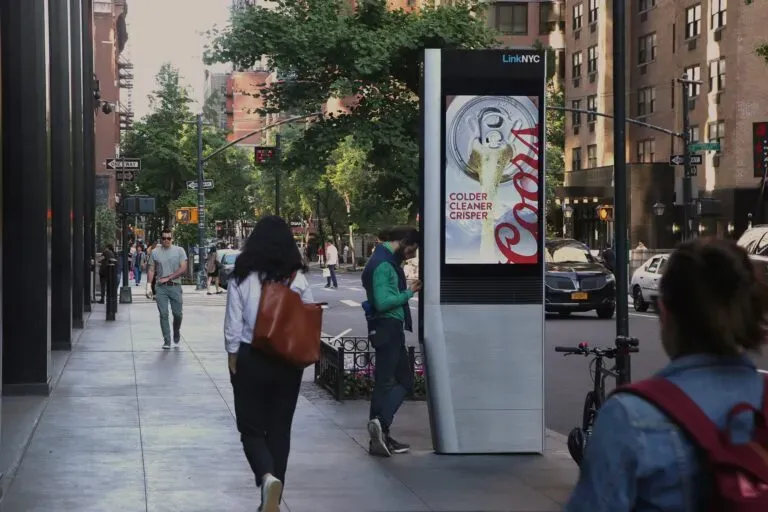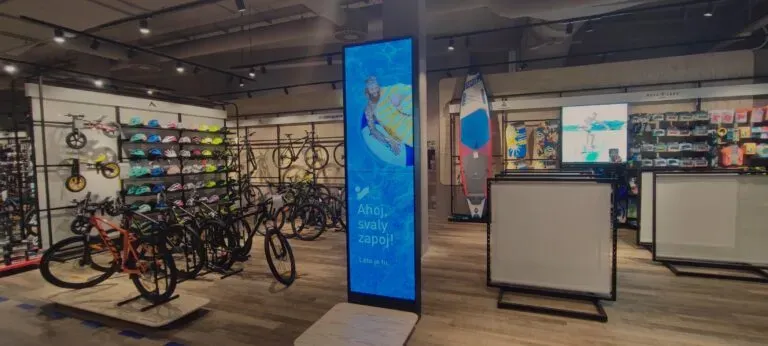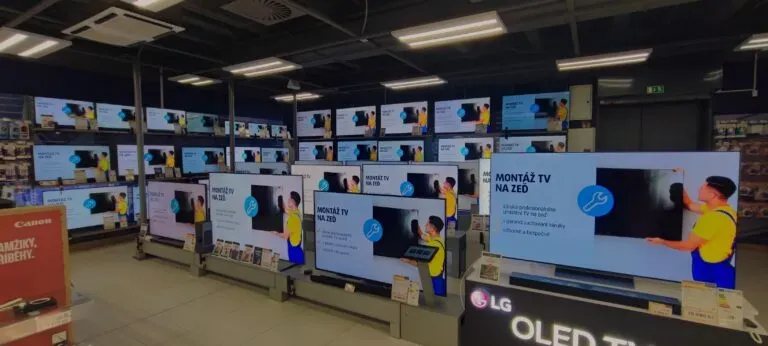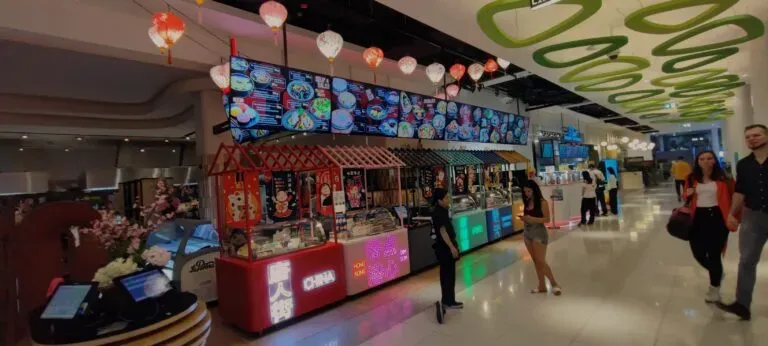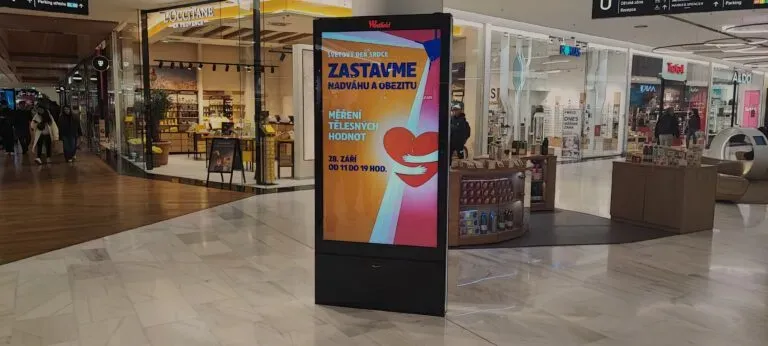Digital Signage: 10 advantages of implementing a feedback collection system
Digital Signage: Each year, companies are increasingly aware of the importance of understanding the desires and expectations of their target audience.
Interactive digital signage screens are turning into an effective tool for direct communication with customers in shopping centers, cafés, transport, or public spaces. Thanks to technology, content management software enables businesses to create flexible communication scenarios—from informing to interactive feedback collection in real time. This opens new opportunities for analytics and improving service quality.
Why is feedback collection important?
Any business owner strives to know what their customers think. Feedback helps to understand whether the service or product meets expectations and to respond to criticism in a timely manner. Through digital signage devices, users can easily leave comments, ratings, or choose response options via a touch screen. This is a convenient and unobtrusive way to engage consumers in dialogue.
Thanks to digital advertising analytics, companies receive details about audience engagement levels, content popularity, and communication effectiveness. Such data helps create targeted advertising messages, improve the UX design of digital screens, and form relevant content for specific situations.
Feedback as part of a modern advertising strategy
In modern conditions, contemporary advertising technologies play a key role in increasing communication effectiveness. Digital signage systems allow not only to broadcast content but also to adapt it to audience behavior. For example, using real-time advertising, campaigns update messages depending on the current context—time of day, geolocation, or visitor flows. Such dynamism creates more relevant interaction between the brand and the consumer, strengthening trust and customer loyalty.
Options for organizing feedback through digital signage
In modern urban space, digital screens are becoming an important element not only for advertising messages but also for creating open dialogue with the audience. Using such solutions allows brands to build transparent and interactive communication, especially with the development of cloud digital signage systems. Thanks to them, operators can remotely configure content, manage device operation, and quickly change customer interaction scenarios.
Urban advertising through interactive panels contributes not only to increased company visibility but also provides additional value for residents and city guests. Convenient feedback channels make it possible to learn public opinion regarding infrastructure, events, or services, as well as to collect proposals for territory development.
A separate role in the service sector is played by digital menus and client information, since such screens in restaurants, cafés, or retail outlets help not only to get acquainted with the assortment but also to fill out a short survey or leave a product/service rating.
All these mechanisms become even more effective thanks to the content management system (CMS), which makes it possible to automate the process of collecting and processing feedback and to integrate the obtained data into overall business analytics. This significantly simplifies adapting marketing strategy to changes in consumer preferences.
The most popular ways to organize feedback:
1. Surveys
One of the most effective methods is conducting surveys using an interactive screen. The client can select one of the offered answers or enter their own message. This approach is especially relevant for quickly collecting analytics on satisfaction levels or wishes regarding the service. Operators can independently change the list of questions depending on the company’s goals and promptly track the results in real time. All responses are saved for further analysis and management decisions, and the interaction process remains intuitive even for new visitors.
Advantages: ease of use; clear visualization of results; prompt statistical data analysis; flexibility of settings.
2. Rating systems
People often evaluate a product, service, or experience using a simple scale or buttons. An intuitive five-star system or classic options such as “like/dislike” significantly increases user participation in the evaluation process. You have the opportunity to immediately see integrated rating statistics and understand which services are most in demand. At the company’s request, a short comment can be added after voting, which allows collecting even more valuable information for improving service quality.
Pluses: speed; obvious mechanism; increased number of respondents at the moment of contact; ability to analyze preferences.
3. QR codes
Using QR codes next to the screen is a convenient way to transfer feedback into the mobile dimension. The client scans the code, goes to a special feedback page on their smartphone, where they can leave an extended comment or message at any convenient time. In addition to standard feedback, visitors can attach files, photos, or additional information, which significantly expands the possibilities for detailed analysis. The system can integrate with a CRM or other business tools, which automates analysis and enables getting results as quickly as possible.
Advantages: ease; mobility; more freedom for writing extended feedback and comments; engagement of a modern audience.
4. Touch buttons
Modern interactive screens are increasingly equipped with touch panels that allow users to press buttons directly on the glass. This is an ideal solution for those businesses that strive to enhance comfort and ensure safety during interaction. A digital signage player with touch control support allows not only updating information remotely, but also creating a unique experience for visitors. The main tool for implementing such solutions is often an Android set-top box, since it supports flexible integration with various applications.
Features: spatial aesthetics; protection from damage; modern screen appearance.
5. Electronic suggestion boards
An interactive electronic board allows clients to leave suggestions or feedback directly on the screen. This promotes the formation of an active community and engages clients in interaction with the brand. For dynamic response to comments, content personalization is used, thanks to which each client sees messages that correspond to their own interests. Administration of content and collection of feedback is assisted by an Android media player, which easily integrates with most management systems and ensures stable operation even under high loads.
Advantages: real connection with the audience; increased trust; motivation to return again.
6. Interactive information zones
Using a digital signage player, effective interactive zones can be created in places with large gatherings of people. This is especially useful for shopping centers or office buildings, where it is important to quickly inform clients. Thanks to such tools as the Android set-top box, it is possible to quickly adapt content without replacing equipment.
7. Intelligent advertising solutions
The use of content personalization allows companies to show exactly those offers that are most interesting to a specific audience at a given moment. This is made possible thanks to modern analytics systems and scenario settings in the Android media player. In this way, businesses get a tool for enhancing advertising effectiveness and attracting new clients.
8. Interactive quizzes and games
Interactive digital advertising is increasingly becoming not only a means of informing but also a way to engage the audience through various quizzes and gaming elements. Users can participate in themed surveys, answer questions, or earn points for quick reaction. This not only increases attention to advertised products but also stimulates repeat visits and friendly attitudes toward the brand. For business, the interactive component is an effective way to increase brand awareness and create a positive customer experience.
Advantages: engagement of a young and active audience; increased time of interaction with the brand; possibility of collecting marketing data in a non-intrusive manner.
9. Remote updates for relevance
Thanks to modern technologies, remote content management has become an integral part of an effective communication environment. Administrators can, in just a few clicks, change texts, update graphics or videos on screens regardless of the geographical location of the devices. This ensures the relevance of information and the ability to quickly respond to changes in assortment or promotional offers. Remote management reduces service costs and increases the flexibility of digital interaction channels.
Advantages: quick response; process efficiency; reduction of human factor; quality control of information at all locations.
10. Comprehensive solutions for business
Modern digital signage solutions combine various tools—from displaying advertising content to comprehensive audience analytics. Such systems not only allow broadcasting statistics, advertising, or announcements but also analyzing customer engagement, automatically personalizing offers, and testing new marketing models. Thanks to integration with CRM and other business platforms, companies get a holistic view of customer interaction—from the first contact to the purchase.
Advantages: multifunctionality; scalability for different business types; cost optimization; statistical control and analytics of advertising campaign effectiveness.
Innovative approaches to customer communication are becoming a real driving force for companies’ competitive advantage. The use of interactive technologies, effective remote content management and the implementation of digital signage solutions make it possible not only to attract a new audience but also to build long-term relationships with customers. Investments in such solutions help businesses remain adaptive, open to change and ready for new market challenges.
Advision is a content management system for remote control, media planning of video and audio content broadcasting, and a supply-side platform for monetising advertising time. We also implement a Wi-Fi tracking system to measure quantitative indicators of the advertising audience. We help Digital Signage owners and DOOH advertising operators earn money from advertising, automate work processes, and build a reliable media infrastructure using AdTech and MarTech software solutions.
Contact us if you want to increase your profits and implement the latest technologies to solve your problems!
Share the news
